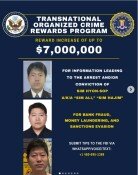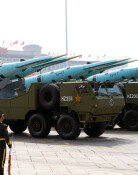[Opinion] General Lee Sun-shins 12 Remaining Ships
[Opinion] General Lee Sun-shins 12 Remaining Ships
Posted June. 10, 2005 06:53,
The Presidential Commission Policy Planning (PCPP)s 12 commissions on national affairs are analogous to the 12 ships of General Lee Sun-Shin that survived until the end, said Lee Jung-woo, the head of PCPP repeatedly. Despite obstacles ahead for national affairs, the 12 commissions tasks would be addressed with firmest will. However, it does not make sense to mention General Lee, a solitary general, in discussing affairs related to the complacent attitude of Cheong Wa Dae.
General Lee used to be a layman in maritime affairs. Then how was it possible for him to become a naval war hero? Most of all, it is most noteworthy that he took perfect advantage of maritime experts with full knowledge of ocean tracks in the South Sea, and knowledge of fishing areas. Based on the skills and experience of those local ocean experts, he won wars with front-line war strategies. By contrast, how much effort has the participatory government put into minimizing trial and error in national affairs by depending on wise experts? Wasnt it dogmatic for a cadre of amateurs with the same code to believe, Everything we know will do with needless combats?
It was a spectacular and dramatic scene where General Lee came back to office and dominated the maritime zone with his remaining 12 ships. Moreover he saved the nation in a solitary battle amid the misunderstandings and restraints of King Seonjo. By contrast, the participatory government was not alone: it took power and made realizing its dreams and visions possible with the presidential victory. It cannot even make excuses for a shortage of seats in the National Assembly: the public saved him from impeachment, resulting in a majority number of seats for it.
For General Lees victory in the war, the texture structure of his Turtle Ship played a pivotal role. Oak and camphor tree branches were guarding the ship to defend it from Japanese ships directly, and pine trees were used for many parts. Instead of metal nails that turned rusty in the ocean, wooden nails were used. General Lees versatile scientific expertise such as this, unique strategies, leadership, and mentality made him what he was, the envy of Britain and Japan. What would General Lee think of the analogy of his 12 remaining ships to the 12 presidential commissions that are full of reckless remarks and coined terms causing misunderstanding and risky adventures?
Kim Chung-shik, editorial writer, skim@donga.com





![[오늘과 내일/우경임]교육부 장관인가, 교사부 장관인가](https://dimg.donga.com/c/138/175/90/1/wps/NEWS/IMAGE/2025/12/26/133045801.1.png)

